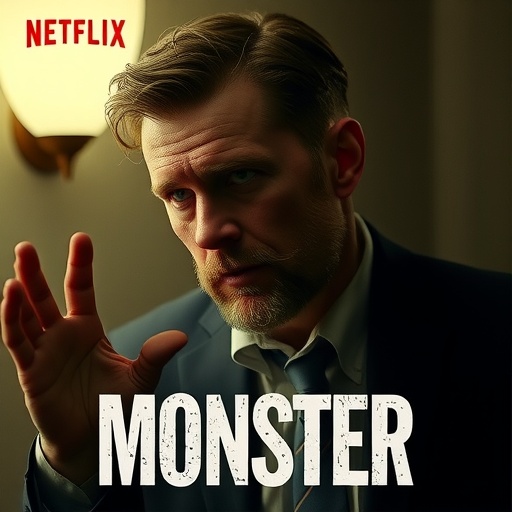Netflix Unleashes Ryan Murphy’s Terrifying Take on Ed Gein’s Atrocities
In a move that’s already sending shivers through the streaming world, Netflix is set to debut Ryan Murphy’s latest entry in his acclaimed Monster anthology series: Monster: The Ed Gein Story. Starring the versatile Charlie Hunnam as the infamous 1950s Wisconsin murderer Ed Gein, this Netflix horror production promises to dissect one of America’s most disturbing true-crime tales. The series, announced amid high anticipation, arrives at a time when true-crime dramas are dominating viewer charts, with Murphy’s previous hit Monster: The Jeffrey Dahmer Story amassing over 856 million viewing hours in its first month alone, according to Netflix’s internal metrics.
- Netflix Unleashes Ryan Murphy’s Terrifying Take on Ed Gein’s Atrocities
- Charlie Hunnam’s Haunting Embodiment of Ed Gein’s Fractured Mind
- Ryan Murphy’s Evolution of the Monster Anthology on Netflix
- Ed Gein’s Real-Life Horrors That Shaped American Pop Culture
- Anticipating the Premiere: Netflix’s Strategy and Viewer Impact
Ed Gein, whose macabre crimes inspired iconic horror films like Alfred Hitchcock’s Psycho and Tobe Hooper’s The Texas Chain Saw Massacre, exhumed bodies from local graveyards and crafted grotesque items from human remains. His 1957 arrest shocked the nation, revealing a reclusive farm life twisted by unimaginable horrors. Murphy, known for his unflinching portrayals of real-life monsters in shows like American Horror Story and Feud, brings his signature blend of psychological depth and visual flair to this story. “Ed Gein’s case isn’t just about the gore; it’s about the fractured psyche of a man shaped by isolation and loss,” Murphy shared in a recent interview with Variety. “We’re aiming to humanize the monster without excusing the monstrosity.”
Charlie Hunnam, stepping into the lead role after captivating audiences as Jax Teller in Sons of Anarchy, undergoes a radical transformation to embody Gein. Sources close to the production reveal that Hunnam’s preparation involved months of research into Gein’s sparse personal history, including visits to the Plainfield, Wisconsin, sites tied to the crimes. The series, spanning eight episodes, is slated for a fall 2024 release, positioning it as a cornerstone of Netflix’s expanding horror slate. With global true-crime viewership surging 25% year-over-year per Nielsen reports, this Monster installment could redefine how we confront the darkest chapters of history.
The announcement has sparked buzz across social media, with #EdGeinNetflix trending and fans speculating on how Murphy will balance historical accuracy with his penchant for dramatic flair. Critics are already weighing in on early footage, praising the series’ atmospheric tension and Hunnam’s nuanced performance. As Netflix continues to invest heavily in original content—committing over $17 billion annually—this project underscores the platform’s dominance in the Netflix horror genre, blending education with edge-of-your-seat entertainment.
Charlie Hunnam’s Haunting Embodiment of Ed Gein’s Fractured Mind
Charlie Hunnam, the British actor whose career has spanned gritty dramas and blockbuster fantasies, takes on his most challenging role yet as Ed Gein in Ryan Murphy’s Monster: The Ed Gein Story. At 44, Hunnam has long been typecast as rugged anti-heroes, from his motorcycle club leader in Sons of Anarchy to the swashbuckling Raleigh Becket in Pacific Rim. But portraying Gein—a shy, unassuming handyman whose inner demons led to heinous acts—requires a departure into vulnerable territory. “It’s the quiet ones you have to watch,” Hunnam told Entertainment Weekly during a set visit. “Gein wasn’t a roaring villain; he was a whisper of madness in a small town.”
To prepare, Hunnam immersed himself in psychological profiles and archival footage, consulting with forensic psychologists to understand Gein’s possible undiagnosed schizophrenia and the impact of his domineering mother, Augusta Gein, whose death in 1945 is believed to have unraveled him. The actor shed 30 pounds and adopted a Midwestern accent, drawing from Gein’s own halting speech patterns documented in trial transcripts. Co-stars, including Emma Corrin as a fictionalized investigator inspired by real-life figures, have lauded Hunnam’s method-acting approach. “Charlie disappears into the role,” Corrin said. “You forget it’s him; you see Gein staring back.”
The series delves into Gein’s 1940s-1950s life in Plainfield, Wisconsin, a rural enclave where he lived alone after his father’s death and brother’s mysterious demise. Key episodes recreate the 1957 discovery of Bernice Worden’s dismembered body in Gein’s shed, a scene that Hunnam described as “emotionally draining but necessary for authenticity.” Production designer Rick Carter, known for Forrest Gump, recreated Gein’s ramshackle farmhouse with chilling accuracy, using salvaged 1950s artifacts to evoke the era’s stifling isolation. Hunnam’s performance is expected to earn Emmy buzz, especially following his Golden Globe nomination for Sons of Anarchy.
Beyond the lead, the ensemble cast features rising stars like Fred Hechinger as Gein’s neighbor and confidant, adding layers to the community’s complicity and denial. Hunnam’s commitment extends to advocacy; he’s partnering with mental health organizations to discuss the series’ themes post-release, highlighting how Gein’s story mirrors broader issues of rural mental health neglect. In a landscape where actors like Evan Peters have excelled in Murphy’s Monster universe—Peters’ Dahmer portrayal drew 56 million views in its debut week—Hunnam is poised to elevate the anthology’s prestige.
Ryan Murphy’s Evolution of the Monster Anthology on Netflix
Ryan Murphy, the prolific showrunner behind FX hits like Glee and American Horror Story, has found a perfect home for his macabre obsessions with Netflix’s Monster series. Following the success of Monster: The Jeffrey Dahmer Story, which became Netflix’s second-most-watched English-language series ever, Monster: The Ed Gein Story marks the anthology’s expansion into even darker historical waters. Murphy’s deal with Netflix, inked in 2021 for $300 million over five years, allows him to explore taboo subjects with fewer network constraints. “The Monster format lets me unpack these figures layer by layer,” Murphy explained at a Netflix Tudum event. “Gein isn’t just a killer; he’s a product of his time and place.”
The anthology’s structure—self-contained seasons on infamous criminals—has proven addictive, with each installment blending true events and dramatic license. For Gein, Murphy draws from Harold Schechter’s biography Deviant and Robert Bloch’s novel Psycho, which fictionalized the killer. The series avoids glorification, instead focusing on societal failures: Gein’s molestation by his mother, the post-WWII economic despair in Wisconsin, and law enforcement’s oversights. Executive producer Alexis Martin Woodall noted, “We’re not making slasher porn; this is a psychological autopsy.”
Murphy’s Netflix horror portfolio also includes The Watcher and upcoming projects like American Horror Story: Delicate, but Monster stands out for its factual core. Viewership data shows true-crime spikes during Halloween seasons, with Netflix reporting a 40% increase in horror genre engagement. Critics applaud Murphy’s empathetic lens; The New York Times called the Dahmer series “brilliantly uncomfortable.” For Gein, expect similar acclaim, tempered by debates over retraumatizing victims’ families—Worden’s descendants have voiced cautious support for educational portrayals.
Behind the camera, Murphy assembles a dream team: Cinematographer Danny Moder captures Wisconsin’s bleak winters in haunting 4K, while composer Mac Quayle scores with dissonant strings echoing Gein’s inner turmoil. The series’ budget, estimated at $10 million per episode, funds elaborate prosthetics and period authenticity, rivaling HBO’s prestige dramas. As Murphy eyes future Monster chapters—rumors swirl around the Menendez brothers—this Gein story cements his role as Netflix’s horror auteur.
Ed Gein’s Real-Life Horrors That Shaped American Pop Culture
The true story of Ed Gein, the basis for Ryan Murphy’s Monster: The Ed Gein Story, remains one of the 20th century’s most grotesque criminal sagas. Born in 1906 in La Crosse, Wisconsin, Gein grew up under the iron rule of his religious fanatic mother, who preached that life was inherently sinful. After Augusta’s death, Gein’s descent accelerated; between 1947 and 1957, he confessed to killing two women—hardware store owner Bernice Worden and tavern keeper Mary Hogan—while robbing at least nine graves for body parts. Police found lampshades, clothing, and even a belt made from human skin in his home, items that fueled tabloid frenzy.
Gein’s 1958 trial, where he was deemed mentally unfit and committed to Central State Hospital, lasted mere days due to his childlike demeanor. He died in 1984 of respiratory failure, but his legacy endures. Hollywood mined his crimes for profit: Norman Bates in Psycho (1960) mirrors Gein’s mommy issues, while Leatherface in The Texas Chain Saw Massacre (1974) embodies his cannibalistic undertones—though Gein himself denied eating flesh. Other nods appear in Silence of the Lambs and American Psycho, making him a foundational figure in slasher cinema.
Statistically, Gein’s case highlighted rural America’s underbelly; FBI records show a spike in grave desecrations post-war, linked to PTSD among veterans like Gein’s brother Henry, who died suspiciously in a 1944 fire. Sociologists like Eric Hickey, author of Serial Murderers and Their Victims, classify Gein as a “visionary” killer, driven by delusions rather than gain. Murphy’s series contextualizes this, exploring 1950s gender norms and economic hardship—Wisconsin’s dairy farms were hit hard by the Great Depression’s echoes.
Pop culture’s fixation persists; documentaries like Ed Gein: America’s Most Bizarre Killer (2006) and books such as Ed Gein: Psycho, Grave Robber, and Cannibal keep the story alive. Netflix’s adaptation arrives amid a true-crime boom, with podcasts like My Favorite Murder frequently referencing Gein. However, ethical concerns linger: Victim advocacy groups, including the National Center for Victims of Crime, urge sensitivity, noting the lasting trauma on Plainfield’s 500 residents.
Anticipating the Premiere: Netflix’s Strategy and Viewer Impact
As Monster: The Ed Gein Story gears up for its Netflix premiere, the streaming giant is ramping up marketing with teaser trailers emphasizing Charlie Hunnam’s eerie transformation and Ryan Murphy’s atmospheric dread. Set for October 25, 2024—prime Halloween timing— the series aligns with Netflix’s strategy to dominate spooky season, following hits like The Fall of the House of Usher, which garnered 87 million views. Promotional tie-ins include virtual tours of recreated Gein sites and panel discussions at New York Comic Con, where Murphy and Hunnam will appear.
Viewers can expect interactive elements, such as Netflix’s behind-the-scenes featurettes and a companion podcast hosted by true-crime expert Aphrodite Jones. The platform’s algorithm favors bingeable content; with Monster episodes dropping weekly, it could sustain buzz through November. Analysts predict 500 million hours viewed, bolstered by global subtitles in 30 languages, tapping into international interest in American serial killers.
Looking ahead, the series may spark renewed scholarly interest in Gein’s psychology, potentially influencing criminology curricula. Murphy has teased a third Monster season on the Golden State Killer, expanding the anthology’s scope. For Hunnam, success could lead to more dramatic roles, distancing him from action fare. Ultimately, this Netflix horror venture not only entertains but provokes: In an era of mass shootings and online radicalization, Gein’s story reminds us that monsters are made, not born, urging society to address the roots of violence before they fester.










